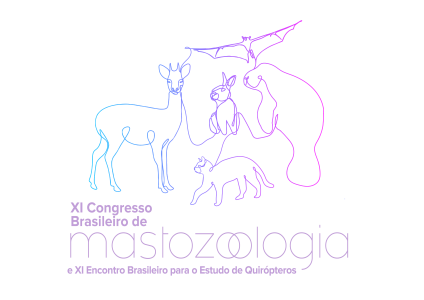Dados do Trabalho
Título:
CHARACTERIZATION OF ENDOGENOUS FELINE LEUKEMIA VIRUS (ENFELV) AND OTHER GAMMARETROVIRUS ELEMENTS IN THE DOMESTIC CAT’S (FELIS CATUS) AND WILD FELIDS’ GENOMES
Resumo:
Feline Leukemia Virus (FeLV) is a member of the Retroviridae family (genus Gammaretrovirus), that develops an aggressive infection in cats (Felis catus). It’s also been reported to infect other felids, causing high mortality outbreaks, as reported in Puma concolor cougar and Lynx pardinus populations. FeLV can also be found in an inactivated endogenous form (enFeLV), which has been shown to impact the outcome of infections by its exogenous counterpart. Both forms can recombine, producing a subtype known for its oncogenic capacity. On the other hand, it has been indicated by RNA-seq analysis that enFeLV LTRs can be used as templates for cellular mechanisms that protect against viral infection. The endogenous form has been characterized in F. catus, but little is known about enFeLV in other felid species, which could hold insights regarding the history of this process, as well as into resistance or susceptibility to infection. Thus, in this study, enFeLV-related sequences were mined and characterized in genomes of felid species deposited in public databases in order to: verify the existence of enFeLVs in these species, evaluate which viral genomic regions were represented and phylogenetically analyze the elements found. First, Basic Local Alignment Search Tool (BLAST) was used to mine enFeLV in eleven felid genomes available in both NCBI and Ensembl (Felis catus, Felis nigripes, Felis chaus, Prionailurus bengalensis, Puma concolor, Herpailurus yagouaroundi, Lynx canadensis, Acinonyx jubatus, Leopardus Geoffroyi, Caracal caracal and Panthera pardus). Two datasets were developed based on the results of the BLAST searches. The first contained the results from the species of the genera Felis and Prionailurus (3 and 1 species, respectively), using the whole sequence of F. catus enFeLV (accession number: LC196055.1) as query. The second dataset was developed by BLAST searches using the pol gene as query, considering that it’s the most conserved gene among retroviruses, and the genomes mined refer to more distantly related species. Therefore, only the pol gene of the same enFeLV sequence was used as a query and sequences from all studied species (11) were mined. The alignment program utilized was MAFFT v.7.470 and the IQ-TREE v1.6.12 software was used in order to infer maximum likelihood phylogenies. Whole sequences and fragments of all genomic regions were found in the first dataset in Felis species, indicating the presence of 5 and 10 full-sequence copies of enFeLV (query cover higher than 75%) for each F. catus and F. chaus haploid genome, respectively. The number of copies in F. catus is within the previously reported range. Meanwhile, sequences aligning with pol gene were encountered in all genomes. Phylogenetic analysis revealed that part of the sequences mined from Felis species grouped closely with FeLV reference (endogenous and exogenous). Meanwhile, the remaining sequences of the Felis genus and those of the other wild felids were placed as a sister group to exogenous Gammaretroviruses. When compared to other retroviral genera, these sequences were closer phylogenetically to exogenous Gammaretroviruses, indicating a possible Gammaretrovirus-related group.
Financiamento:
Área
Genética
Autores
Ricardo Mouta Borges de Medeiros, Liliane Tavares de Faria Cavalcante, André Felipe Andrade dos Santos, Filipe Romero Rabelo Moreira, Marcelo Alves Soares
